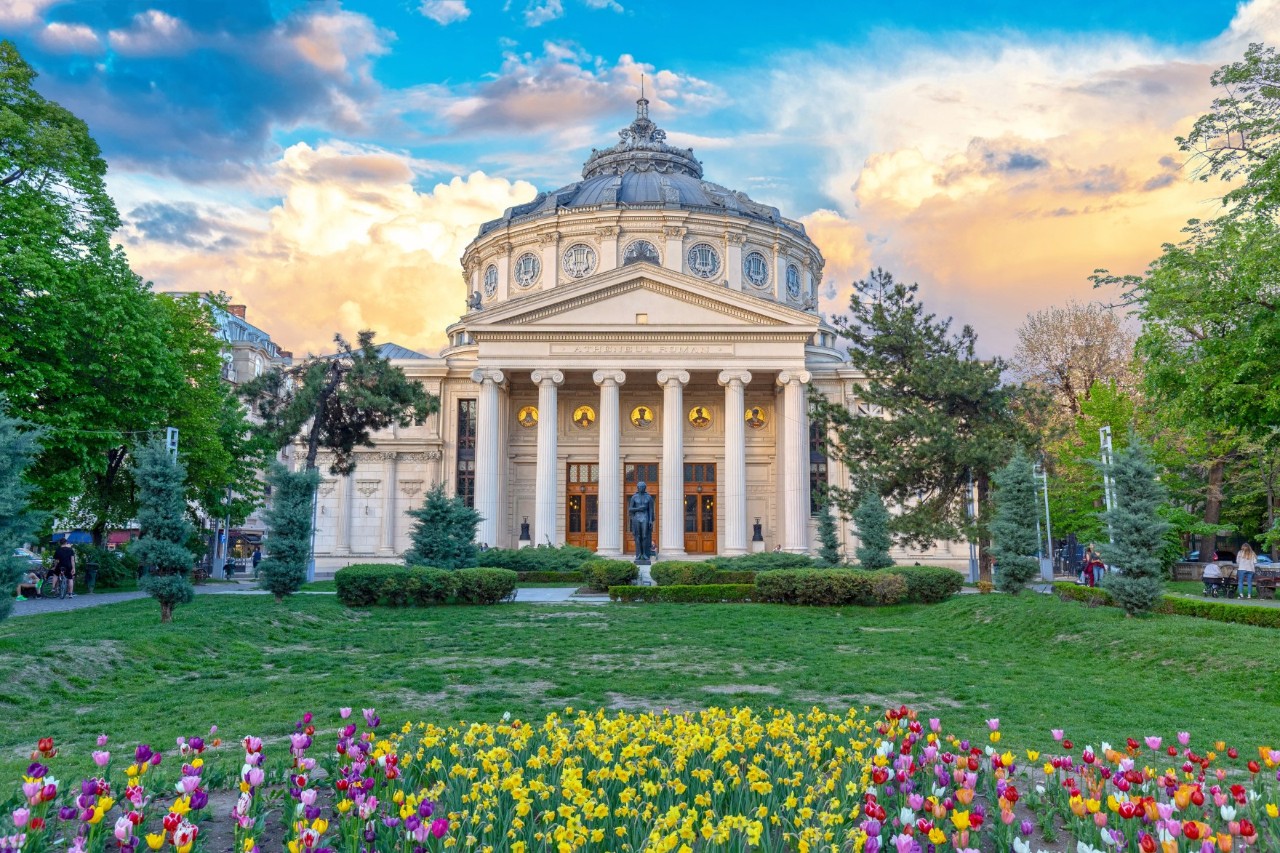A City Full of Contrasts
Bucharest is a city with many faces and is full of contrasts. It is a vibrant, changing metropolis, the eventful history of which is still clearly recognisable in the cityscape today. Monumental ostentatious buildings, such as the Palace of the Parliament, age-old orthodox churches, neoclassical buildings, such as the Athenaeum, as well as extensive boulevards and a triumphal arch like the one in Paris attest to the various influences in the past.
Enchanted corners and old cobbled streets can be found in Romania’s capital as can trendy pubs, a lively cultural scene and modern shops. Bucharest is located in Wallachia, the southern part of Romania, which is known for its ancient monasteries and fairytale castles. Another good reason to visit Bucharest is the traditional Romanian cuisine combined with warm hospitality.
Numbers, data, facts
- Time difference: + one hour
- Population: 1.7 million
- Official language: Romanian
- Currency: Leu (RON)
The many faces of Bucharest
Following in Dracula’s footsteps
Bucharest is the capital of Wallachia, a historic region known for its centuries-old monasteries, castles and churches. To the north-west of Bucharest lies the old town of Curtea de Arges, where many Byzantine buildings have been preserved to this day. Wallachia borders the Transylvania region to the north and the Transylvanian Carpathians, where you can explore remote mountain regions and follow in the footsteps of Count Dracula. It is best to visit “Dracula Castle” in the village of Bran to get closer to the famous vampire. This can be perfectly combined with a visit to the fairytale castle of Peles. If it is the sound of the sea and a fresh breeze you want, you can travel from Bucharest to the beach at Mamaia, the oldest resort on the Romanian Black Sea coast, north of Constanta.
Excursions from Bucharest
Bucharest from BER
- Airline to Bucharest
- Airports from BER
Five travel tips for ...
- Stroll through the old town with its cobbled streets
- Discover the enchanting streets of Lipscani
- Admire the botanical gardens in Herăstrău Park
- Take a detour into the side streets of Calea Victoriei
- Stroll along the illuminated Boulevard Unirii in the evening
- The enormous parliamentary palace from the communist era
- The neoclassical magnificence of the Athenaeum
- The orthodox monastery church San Stavropoleus
- A village in the centre of the city: the “Dimitrie Gusti” open-air museum
- The triumphal arch, which resembles its model in Paris
- As a starter: ciorba de vacuta (hearty beef soup)
- Romania’s national dish: sarmale (stuffed cabbage rolls)
- Common side dish: Mămăligă (solid maize porridge)
- With various fillings: bulz (traditional dumplings)
- For dessert: papanasi (sweet, deep-fried pastry)
Picture Source title:
© xpabli/stock.adobe.com
The information published on this page is current as of the date of publication or update.


















